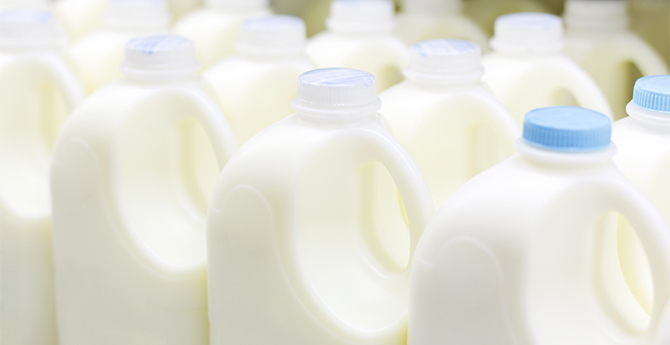What Is Homogenized Milk?
You know from reading labels in the dairy case that milk is homogenized. But do you know what exactly homogenized milk means?
What Is Homogenization?
When milk is left on its own, the naturally occurring milkfat particles rise to the surface to create a layer of cream.
Milk homogenization is a simple process that mixes and disperses that milkfat by using a high-pressure procedure to break it down into smaller particles. When finished, the tiny particles stay suspended in the milk to create a more uniform mixture. The homogenization process, which became standard in the 19th century, is a step that does not involve any additives or chemical treatments.
When people buy non-homogenized milk, they either skim the layer of cream off the top, or shake the milk to evenly distribute the cream back into the milk themselves.
Why Is Milk Homogenized?
Milk is homogenized, not for taste, but to give milk its rich, white color and smooth texture that we’re used to. This process prevents cream from rising to the top, and saves you the step of mixing the cream back into the milk yourself before drinking it. The homogenization process has no effect on how your milk tastes or what’s in it.
The Differences Between Pasteurized Milk and Homogenized Milk
Milk homogenization is a completely separate process from milk pasteurization. In most cases, milk is first pasteurized and then homogenized to mix and disperse the milkfat throughout the milk to create a uniform mixture.
Is Homogenized Milk Bad for You?
No. Like all milk, homogenized milk is one of the safest and most naturally nutrient-rich foods you can find in the grocery store. Much like choosing between whole, reduced fat, lowfat or fat free milk, deciding whether or not to purchase non-homogenized milk is a matter of personal preference, rather than safety. Homogenized milk is the most readily available option on your shopping list, but you can buy non-homogenized milk at specialty retailers.




